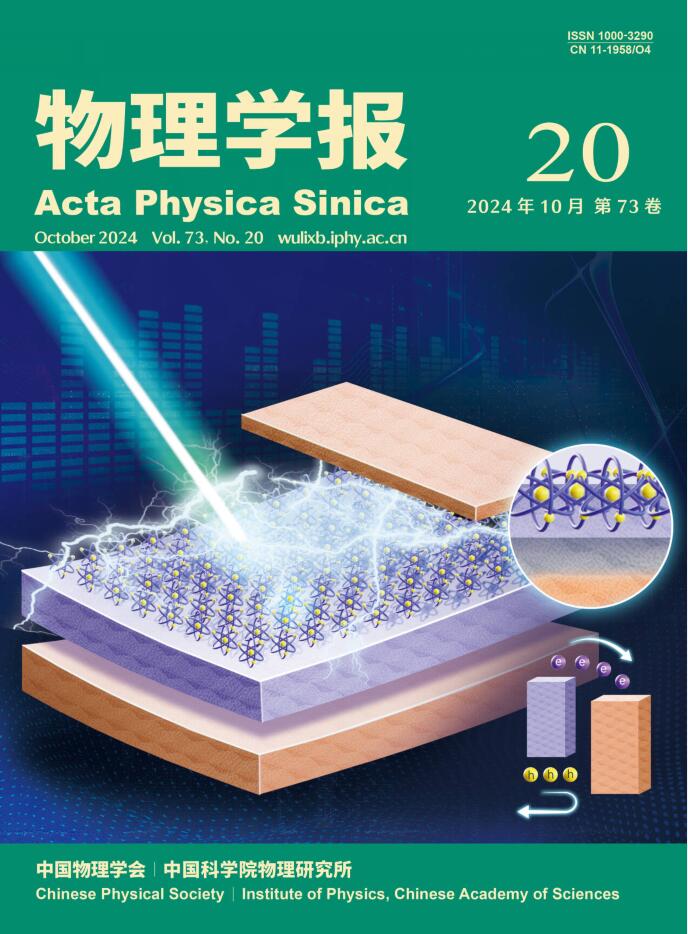Composite Basis Set of Plane Wave and Gaussian Function or Spline Function
IF 0.8
4区 物理与天体物理
Q3 PHYSICS, MULTIDISCIPLINARY
引用次数: 0
Abstract
By combining plane waves with Gaussian or spline functions, this paper constructs a new composite basis set. As a non local basis vector, the plane wave basis group needs a large number of plane waves to expand all parts of the physical space, including the intermediate regions that are not important to our problems. Our basis set uses the local characteristics of Gaussian function or spline function at the same time, and controls the energy interval by selecting different plane wave vectors, so as to realize the partition solution of Hamiltonian matrix. Orthogonal normalization of composite basis sets is performed using Gram-Schmidt's orthogonalization method or Löwdin's orthogonalization method. Considering the completeness of plane wave vector, a certain value of positive and negative should be selected at the same time. Here, by changing the absolute value of wave vector, we can select the eigenvalue interval to be solved. The plane wave with a specific wave vector value is equivalent to a trial solution in the region with gentle potential energy. The algorithm automatically combines local Gaussian or spline functions to match the wave vector value difference between the trial solution and the strict solution. By selecting the absolute value of the wave vector in the plane wave function, this paper turns the calculation of large Hamiltonian matrices into the calculation of multiple small matrices, together with reducing the basis numbers in the region where the electron potential changes smoothly, we can significantly reduce the computational time. As an example, we apply this basis set to a one-dimensional finite depth potential well, it can be found that our method significantly reduce the number of basis vectors used to expand the wave function while maintaining a suitable degree of computational accuracy. We also studied the impact of different parameters on calculation accuracy. Finally, the above calculation method can be directly applied to the DFT calculation of plasmons in silver nanoplates or other metal nanostructures. Given a reasonable tentative initial state, the ground state electron density distribution of the system can be solved by self consistent solution using DFT theory, and then the electromagnetic field distribution and optical properties of the system can be solved using time-dependent density functional theory theory (TDDFT).平面波与高斯函数或样条函数的复合基集
将平面波与高斯函数或样条函数结合,构造了一个新的复合基集。平面波基群作为非局部基向量,需要大量的平面波来扩展物理空间的各个部分,包括对我们的问题不重要的中间区域。我们的基集同时利用高斯函数或样条函数的局部特征,通过选择不同的平面波矢量来控制能量区间,从而实现哈密顿矩阵的分配解。复合基集的正交归一化采用Gram-Schmidt正交法或Löwdin正交法。考虑平面波矢量的完备性,应同时选取一定的正负值。在这里,通过改变波矢量的绝对值,我们可以选择待解的特征值区间。具有特定波矢值的平面波等效于具有弱势能区域的试解。该算法自动结合局部高斯函数或样条函数来匹配试解与严格解之间的波矢量值差。本文通过选取平面波函数中波矢量的绝对值,将大哈密顿矩阵的计算变为多个小矩阵的计算,同时减少电子势平稳变化区域的基数,可以显著减少计算时间。作为一个例子,我们将该基集应用于一维有限深度势井,可以发现我们的方法显着减少了用于展开波函数的基向量的数量,同时保持了适当的计算精度。研究了不同参数对计算精度的影响。最后,上述计算方法可直接应用于银纳米板或其他金属纳米结构中等离子体激元的DFT计算。给定合理的暂定初始态,利用DFT理论通过自洽解求解系统的基态电子密度分布,然后利用随时间密度泛函理论(TDDFT)求解系统的电磁场分布和光学性质。
本文章由计算机程序翻译,如有差异,请以英文原文为准。
求助全文
约1分钟内获得全文
求助全文
来源期刊

物理学报
物理-物理:综合
CiteScore
1.70
自引率
30.00%
发文量
31245
审稿时长
1.9 months
期刊介绍:
Acta Physica Sinica (Acta Phys. Sin.) is supervised by Chinese Academy of Sciences and sponsored by Chinese Physical Society and Institute of Physics, Chinese Academy of Sciences. Published by Chinese Physical Society and launched in 1933, it is a semimonthly journal with about 40 articles per issue.
It publishes original and top quality research papers, rapid communications and reviews in all branches of physics in Chinese. Acta Phys. Sin. enjoys high reputation among Chinese physics journals and plays a key role in bridging China and rest of the world in physics research. Specific areas of interest include: Condensed matter and materials physics; Atomic, molecular, and optical physics; Statistical, nonlinear, and soft matter physics; Plasma physics; Interdisciplinary physics.
 求助内容:
求助内容: 应助结果提醒方式:
应助结果提醒方式:


